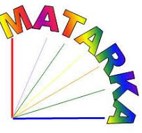Az élőhelyvesztés szerepe a mezei nyúl (Lepus europaeus Pallas 1778) állomány csökkenésében Magyarországon
Absztrakt
A mezei nyúl állomány folyamatos csökkenésének egyik legfontosabb oka az élőhelyvesztés lehet. Ezért a mezőgazdasági élőhelyek hatásának felmérésére két különböző területen vizsgáltuk a mezei nyulak élőhelyhasználatát, táplálékösszetételét és diverzitását. A kistáblákon és a gyepeken magasabb volt az állatok előfordulási aránya, mint az erdős vagy intenzív mezőgazdasági részeken. A kistáblák térbeli használata egyenletesebb volt, mint a nagyoké, ezek belsejét ritkábban látogatták, inkább a szegélyzónákat kedvelték. A gyepeket viszont egyenletesen bejárták. A mezei nyúl sokféle növényt szeret fogyasztani minden időszakban. Tavasszal jelentős különbséget találtunk a kis és a nagy táblákon élő nyulak táplálék összetétele között. Az előbbiek változatosabban táplálkoztak, de a legnagyobb variabilitást a gyepen élőknél találtuk. A nyulak számára a mezőgazdasági területen a betakarítás utáni időszak volt a legrosszabb, amikor hirtelen lecsökkent a tápláléknövények mennyisége és változatossága (szignifikáns diverzitás csökkenés, alacsonyabb egyenletesség). A nyulak számára tehát az erdősítések és az intenzív, szegélyek nélküli nagytáblás és monokultúrás mezőgazdasági termelés rendkívül kedvezőtlen hatású, ami az állomány további csökkenését okozhatja, ha nem változtatunk a termelési módszereken.
Hivatkozások
Ángyán, J., Tardy, J. & Vajnáné Madarassy, A. (szerk.) (2003): Védett és érzékeny természeti területek mezőgazdálkodásának alapjai. – Mezőgazda Kiadó, Budapest, 625 pp.
Barkóczi, I. & Hagymási, L. (1982): Nyúlremények. – Nimród 102(2): 58–59.
Bíró, Zs., Katona, K. & Szemethy, L. (2003): A mezei nyúl táplálkozási jellegzetességei különböző magyarországi élőhelyeken. – Vadbiológia 10: 68–73.
Biró, Zs. & Szemethy, L. (2002): A Kovács-Heltay féle mezei nyúl gazdálkodási modell kritikája és továbbfejlesztésének lehetősége. – Vadbiológia 9: 73–82.
Chapuis, J. L. (1990): Comparsion of the diets of two sympatric lagomorphs, Lepus europaeus (Pallas) and Oryctolagulus cuniculus (L.) in an agroecosystem of the Ile-de-France. – Z. Säugetierkd. 55: 176–185.
Csányi, S. (szerk.) (1996): Vadgazdálkodási Adattár 1960–1995. – Szt. István Egyetem, Vadbiológiai és Vadgazdálkodási Tanszék, Gödöllő, 215 pp.
Csányi, S., Lehoczki, R. & Sonkoly, K. (2007): Vadgazdálkodási Adattár 2006/2007 vadászati év. – Országos Vadgazdálkodási Adattár, Gödöllő, 64 pp.
Demeter, E. & Mátrai, K. (1988): A mezei nyúl tápláléka intenzíven művelt alföldi területen, novemberben. – Vadbiológia 2: 85–90.
Faragó, S. (1997): Élőhelyfejlesztés az apróvad-gazdálkodásban. – Mezőgazda Kiadó, Budapest, 356 pp.
Frylestam, B. (1986): Agricultural land use effects on the winter diet of Brown Hares (Lepus europeus Pallas) in southern Sweden. – Mammal Rev. 16(3/4): 157–161.
Hutcheson, K. (1970): A test for comparing diversities based on Shannon formula. – J. Theor. Biol. 29: 151–154.
Katona, K. & Altbäcker, V. (2002): Diet estimation by faeces analysis: sampling optimisation for the European hare. – Folia Zool. 51: 11–15.
Kovács, Gy. & Búza, Cs. (1988): A mezei nyúl mozgáskörzetének jellemzői egy erdősült és egy intenzíven művelt mezőgazdasági élőhelyen. – Vadbiológia 2: 67–84.
Kovács, Gy. & Heltay, I. (1993): A mezei nyúl. Ökológia, gazdálkodás, vadászat. – Hubertus Bt. és Magyar Mezőgazdaság Bt., Budapest, 177 pp.
Krebs, C. J. (1989): Ecological Methodology. – Harper & Row Publ., New York, 652 pp.
Lewandowski, K. & Nowakowski, J. J. (1993): Spatial distribution of brown hare Lepus europaeus populations in habitats of various types of agriculture. – Acta Theriol. 38(4): 435–442.
Mátrai, K., Koltay, A. & Vízi, Gy. (1986): Key based on leaf epidermal anatomy for food habits studies of herbivores. – Acta Bot. Hung. 23: 255–271.
Puig, S., Videla, F., Cona, M. I. & Monge, S. A. (2007): Diet of the brown hare (Lepus europaeus) and food availability in northern Patagonia (Mendoza, Argentina). – Mamm. Biol. 72(4): 240–250.
Vaughan, N., Lucas, E-A., Harris, S. & White, P. C. L. (2003): Habitat associations of European hares Lepus europaeus in England and Wales: implications for farmland management. – J. Appl. Ecol. 40: 163–175.
van der Wal, R., Kunst, P. & Drent. R. (1998): Interactions between hare and Brent goose in a salt marsh system: evidence for food competition? – Oecologia 117: 227–234.






